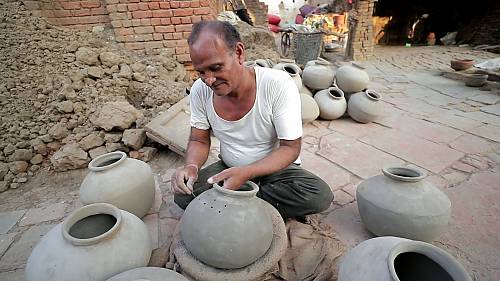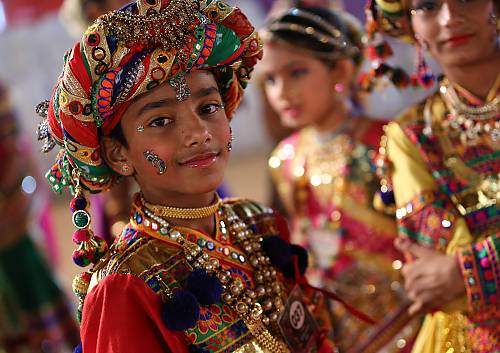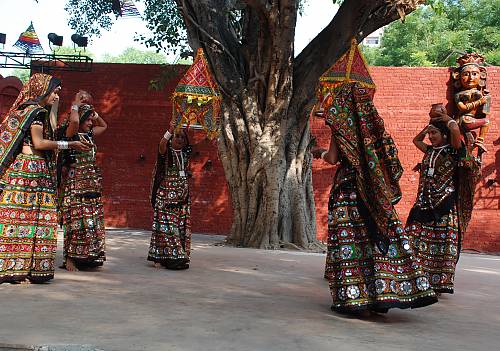Garba of Gujarat
Inscribed in 2023 (18.COM) on the Representative List of the Intangible Cultural Heritage of Humanity

Garba is a ritualistic and devotional dance that is performed on the occasion of the Hindu festival of Navaratri, which is dedicated to the worship of the feminine energy or ‘Shakti’. The dance takes place around a perforated earthenware pot lit with an oil lamp, or an image of the mother goddess Amba. The dancers move around the centre in a counter-clockwise circle, using simple movements while singing and clapping their hands in unison. Starting with slow circular movements, the tempo slowly builds up to a frenzied whirling. The practitioners and bearers of Garba are broad and inclusive, from the dancers to the musicians, social groups, craftspeople and religious figures involved in the festivities and preparations. Garba is transmitted across generations in urban and rural areas through practice, performance, imitation, and observation. Many schools and universities offer professional courses and workshops in dance, music, costume and ornament design, landscape planning, sound and light design, all of which contribute to Garba creations. The practice is also transmitted by NGOs, government agencies, choreographers, musicians and the media. Garba fosters social equality by diluting socio-economic, gender and religious structures. It continues to be inclusive of diverse and marginalized communities, thus strengthening social bonds.









